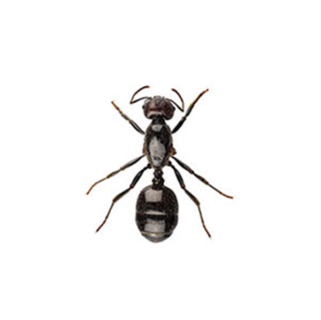Larger Yellow Ants (Citronella Ant)
The larger yellow ant, also known as the citronella ant, is a common ant species in the North Carolina area. When disturbed, larger yellow ants release a compound that smells like citronella or lemon. As nocturnal pests, these ants are not known to feed on household foods but feed exclusively on the honeydew produced by aphids and mealybugs. Pest problems usually occur in the late summer and fall when mixed colonies swarm. Often confused with termites, winged swarmers and wingless worker ants move toward buildings and try to enter through cracks or gaps in the foundation.
Larger Yellow Ant Identification
What Do Larger Yellow Ants Look Like?
Larger yellow ants, also known as citronella ants, are notable for their size and color. They typically measure between 4 to 4.5 mm in length. Their bodies are a distinct yellowish or light brown color, which gives them their common name. These ants are also known for the lemon or citronella-like odor they emit when disturbed.
Signs of a Larger Yellow Ant Infestation
Signs of a larger yellow ant infestation include sightings of the ants, often around the foundation of homes or near moist soil areas. Unlike other ant species, they do not typically enter homes for food. However, if you find tiny yellow ants in your kitchen, this could be due to them being drawn indoors by water sources or other environmental conditions.
Habitat, Diet, Life Cycle & Bites
Where Do Larger Yellow Ants Live?
Outdoors, larger yellow ants can be found nesting in high moisture soil beside structures, along foundation walls, similar to tiny black ants they can also be found under stumps, logs, or rocks. Indoors, these ants are sometimes found behind bathtubs or shower walls or in damp crawl spaces, especially over winter.
Diet of Larger Yellow Ants
Their primary diet consists of the honeydew produced by aphids and mealybugs, which they farm and protect. This unique relationship is essential to their survival.
Life Cycle of Larger Yellow Ants
The life cycle of larger yellow ants follows the typical ant pattern: egg, larva, pupa, and adult. These ants can form large colonies, often seen through the small mounds of dirt they push to the surface.
Larger Yellow Ant Bites
Larger yellow ants are not known for biting humans. They are generally non-aggressive and pose little to no threat in terms of bites or stings.
Are Larger Yellow Ants Dangerous?
Larger yellow ants are not dangerous as they do not have a stinger, but can become a nuisance when winged ants swarm indoors, or as workers dump soil from cracks in floors or basement walls. When swarming, homeowners often mistake these ants for termites or carpenter ants. Homeowners may be alarmed by the large numbers of swarming ants that converge on the side of homes and structures. Although they do not forage into homes, they create piles of dirt at the entrance to the nest. If a larger yellow ant issue is suspected, it is best to consult a professional ant exterminator.
How to Get Rid of Larger Yellow Ants?
To get rid of larger yellow ants, reduce moisture and eliminate standing water around the home. Since they do not typically enter homes for food, indoor ant baits are usually ineffective. Managing aphid populations can also reduce their food source.
Larger Yellow Ant Prevention Tips
Prevent larger yellow ants by maintaining a dry environment around your home. Ensure proper drainage in your yard and repair leaks promptly. Removing rotting wood and other debris can also help to discourage their nesting.
Need help with Larger Yellow Ants (Citronella Ants) control?
Need Pest Control Service?
Leave your information below and we’ll be in touch with a FREE quote!
"*" indicates required fields
*During normal business hours. After hours calls will be returned the next business day.
FAQs
What are the Yellow Giant Ants?
The yellow giant ants or larger yellow ants are a species known for their size and yellowish color. They are often found in moist outdoor environments. Large citronella ants are another name for larger yellow ants, derived from the citronella-like odor they emit. They are common in areas with moist soil.
Are Citronella Ants Harmful?
Citronella ants are not harmful to humans. They do not bite or sting and are not known to cause property damage.





